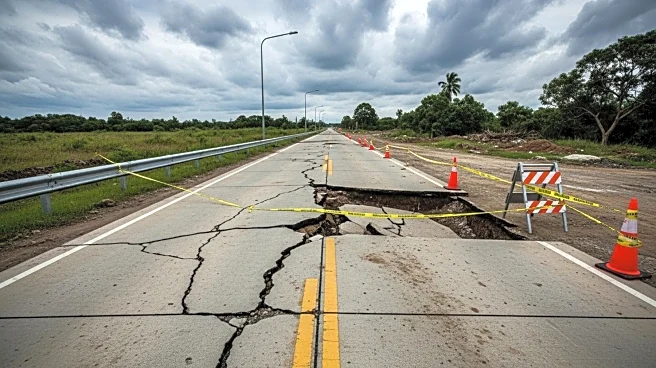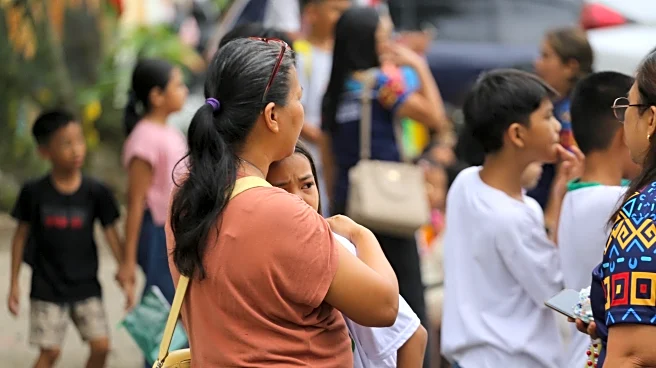What's Happening?
A 7.4 magnitude earthquake struck off the southeastern coast of the Philippines, causing panic among residents who fled into the streets as the ground shook. The earthquake occurred near Mindanao island, approximately 123 kilometers from Davao City, at a depth of 58.1 kilometers. The US Tsunami Warning system initially issued a tsunami advisory for the Philippines, Indonesia, and Palau, but the threat was lifted by midday. The Philippine Institute of Volcanology and Seismology reported hundreds of aftershocks and warned that they could continue for several days to weeks. The region is known for its seismic activity, having experienced several significant earthquakes in the past.
Why It's Important?
The earthquake highlights the vulnerability of the Philippines to natural disasters, given its location along the Ring of Fire. The immediate impact includes potential damage to infrastructure and the need for emergency response efforts. The event underscores the importance of disaster preparedness and the challenges faced by the government in managing relief operations. The economic implications could be significant, affecting local businesses and communities, especially in areas prone to seismic activity.
What's Next?
Authorities are assessing the situation and preparing search and rescue operations. The government is likely to focus on providing aid and support to affected areas, while monitoring for further aftershocks. The event may prompt discussions on improving infrastructure resilience and disaster response strategies in the Philippines.
Beyond the Headlines
The earthquake may lead to increased scrutiny of government disaster management policies and funding allocations. There could be ethical considerations regarding the use of relief funds and the effectiveness of current preparedness measures. Long-term, the event may influence cultural attitudes towards disaster readiness and community resilience.












